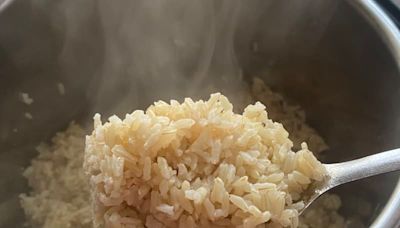Search results
Sep 11, 2024 · According to UK food safety standards, food should be reheated to a core temperature of at least 75°C (165°F). This ensures that bacteria, such as Salmonella and E. coli, are destroyed. The Food Standards Agency (FSA) recommends that food be reheated thoroughly and evenly, making sure it is piping hot throughout.
- Cooking Top Tips
- How to Check Food Is Cooked Properly
- Cooking Temperatures and Times
- Advice on Cooking Meat
- Advice on Cooking Fish and Seafood
- Advice on Cooking Frozen Vegetables
- Using Your Leftovers
- Other Ways to Cook Your Food
Make sure your food is safe with our top tips: 1. always follow cooking temperature guidelines according to the recipe or packet instructions carefully 2. check that food is cooked completely before serving - use visual cues, such as making sure the food is steaming hot 3. consider using a food thermometer to verify the correct temperature 4. pract...
Checking your food is cooked properly will help you to avoid food poisoning. Foods can vary in the ways and times you need to cook them before they are ready to eat. We have specific information for different foods, such as meat, fish, and frozen vegetables on this page. But here are some general ways to check food is cooked properly.
To ensure that food is fully cooked, the middle of the food should reach a temperature of 70°C for 2 minutes or the following temperature-time combinations: 1. 60°C for 45 minutes 2. 65°C for 10 minutes 3. 70°C for 2 minutes 4. 75°C for 30 seconds 5. 80°C for 6 seconds You will need a clean food thermometer to measure these temperatures accurately....
It is important to check that meat is cooked thoroughly to protect yourself and others from food poisoning. Bacteria can be found in all raw meats but in different areas of the meat. This can change the way you can cook it, and how to check if it’s been thoroughly cooked.
When cooking fish or seafood there are visual and sensory cues you can use to help determine if the food is cooked thoroughly: 1. fish flesh should turn opaque (no longer transparent) and separates easily with a fork 2. prawns, scallops, crab, and lobster flesh should become firm and opaque 3. when cooking clams, mussels, and oysters the shells ope...
Some frozen vegetables, such as sweetcorn, peas, and carrots, can contain bacteria. Frozen vegetables need to be thoroughly cooked before you can eat them. If you intend to use frozen vegetables as part of a cold salad or smoothies, check the instructions on the packaging first. If the advice on the packaging states that the frozen vegetables shoul...
Make your food go further by using your leftovers safely. This can save you time and money and help fight food waste.
Meals can also be prepared using appliances such as a microwave, slow cooker, or air fryer. Depending on the cooking method and appliance efficiency, foods will require different times and temperatures to be properly cooked. Also, while different foods can be cooked together, they may require different times and temperatures. In some appliances, yo...
Need-to-know advice on stir-fries, curries and rice. As Mosley explains, the trick is to heat the food until it is 82C (176F) throughout to be sure that you can kill any harmful bacteria....
What temperature should food be reheated to? The ideal temperature to reheat food to is a minimum of 165°F (74°C). This temperature is recommended by food safety experts to kill any bacteria, viruses, or parasites that may be present in the food.
- Overview. Good food hygiene means knowing how to avoid the spread of bacteria when cooking, preparing, and storing food. Foods that aren’t cooked, stored and handled correctly can cause food poisoning and other conditions.
- 4 steps to food safety. There are 4 basic steps to food safety at home, these are known as the four C’s: cleaning – making sure your hands, surfaces and equipment are clean before, during and after cooking.
- Cleaning. The bacteria that cause food poisoning can be found in many places around your kitchen. Unless you take care to clean your hands, surfaces and utensils properly, this bacteria could end up in your food.
- Wash your hands. You should always wash your hands thoroughly with soap and warm water: before you prepare, cook or eat food. after handling raw food such as raw meat, uncooked eggs and unwashed fruit and vegetables.
Feb 22, 2016 · Plan ahead. ‘Plan your work in such a way that foods that can be kept warm or reheated easily are cooked first,' Rakesh advises. ‘For example, if you would like to prepare a baked whole...
People also ask
Can You reheat leftover food?
What temperature should food be reheated?
Should you reheat food before cooking?
Does reheating food kill bacteria?
Does reheating food take a long time?
Is reheating food safe?
It is very important to reheat food properly to kill harmful bacteria that may have grown since the food was cooked. THINK TWICE! Remember, reheating means cooking again, not just warming...





